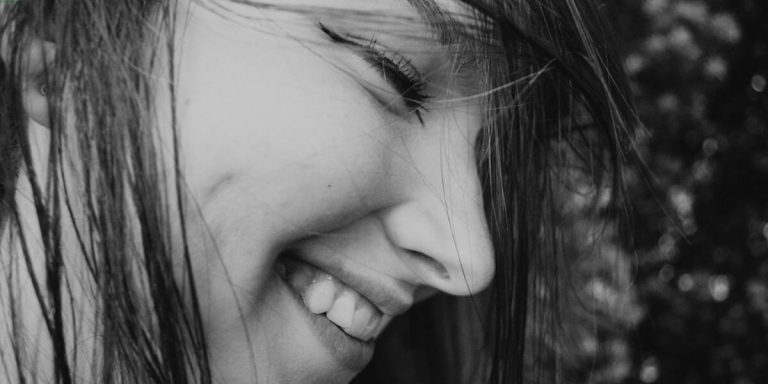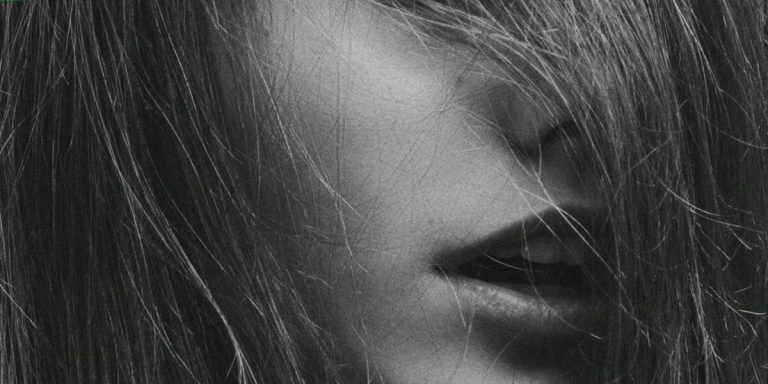Cancer Treatment Hair Loss: Understanding and Managing this Side Effect
Cancer treatment hair loss is a distressing side effect that many patients face while battling the disease. It’s not just about physical changes, but it also takes an emotional toll as one loses their most enviable feature – their crowning glory. Understanding this aspect of treatment can help lessen its impact and equip one with effective management measures.
The process behind cancer treatments affecting your locks lies in how these therapies work against rapidly dividing cells – including healthy ones like those found within our hair follicles. While coping mechanisms cannot prevent this side effect completely, there are numerous ways to manage it and even promote accelerated regrowth post-treatment.
Did you know?
An often overlooked fact is that not all chemotherapy drugs cause hair loss. The impact varies significantly with different types of medications, and some won’t result in any hair thinning or baldness at all.
Understanding Hair Loss During Cancer Treatment
The journey towards cancer recovery often involves several medical treatments such as chemotherapy and radiation therapy. While these are crucial in addressing the disease, they may result in unwanted side effects such as hair loss. This is due to their nature of targeting rapidly dividing cells, not differentiating between normal cells like those contributing to hair growth and abnormal ones that cause cancer.
Hair loss during cancer treatment can be particularly distressing for many patients since it significantly affects physical appearance while also acting a constant reminder of their ongoing battle with this dreadful condition. However, it’s essential to remember that this type of hair loss is typically temporary: Most people notice regrowth shortly after concluding their therapy sessions.
Let’s explore “cancer treatment hair loss” and celebrate the technological advancements that aim to reduce or ease this side effect. Today, various solutions exist due to ongoing progress in healthcare and cosmetics, including:
- Specialized cooling caps for use during chemotherapy
- A selection of tailored wigs made with advanced techniques.
Causes of Hair Loss in Cancer Patients
Cancer treatment is often synonymous with hair loss, a side effect that causes distress to many patients. This particular type of hair loss occurs due to certain medicines used in chemotherapy and radiation therapy, designed specifically for destroying fast-growing cancer cells.
Chemotherapy drugs are very powerful medications that aggressively target all rapidly growing cells in the body – including those found within your hair follicles. Because these drugs travel throughout your body reaching nearly every cell, they affect both cancerous and healthy cells causing widespread cellular damage which includes impacting cell growth responsible for producing new hairs.
Approximately 65% of individuals subjected to chemotherapy experience this kind of drastic thinning or complete removal known as ‘anagen effluvium.’ It’s an abrupt halt on hair production whereby shortly after treatment (usually between one to three weeks), you may notice significant amounts falling out when brushing or washing it — sometimes even handfuls at once!
Radiation therapy also presents similar outcomes but only affects areas directly targeted by radiation. For instance, if receiving head or neck radiotherapy there’s almost certainty towards experiencing substantial fallout from scalp region yet rest remains unaffected unless exposed likewise during sessions.
The Role of Chemotherapy and Radiation Therapy
Chemotherapy and radiation therapy are common treatments for cancer. But while their goal is to destroy the rampaging cells, they often have a collateral effect: hair loss. Understandably, many people find this distressing.
Chemotherapy works by targeting rapidly dividing cells in your body – an attribute of most cancerous tissues. However, other non-cancerous areas—like our hair follicles—that also exhibit rapid cell division become unintended casualties.
Hair typically starts falling out two to three weeks after the first chemo session; it happens suddenly rather than gradually over time. It’s usually more noticeable on the scalp but can affect eyebrows, eyelashes and even body hair too.
But fear not! While finishing treatments could mean donning wigs or scarves initially due to visible bald spots—a full recovery post-therapy isn’t uncommon!
Once chemotherapy ends, you’ll see regrowth within six months; with radiation treatments—three-to-six months following its conclusion sees potential fresh growth sprouting back up again.
Now let’s discuss various ways we counteract these temporary side-effects:
Innovative Therapies for Managing Cancer Treatment-Induced Hair Loss
In the realm of cancer treatment, one common and unfortunate side effect that distresses patients is hair loss. Traditionally synonymous with chemotherapy and radiation therapies, this dreaded aftermath has been a source of psychological stress for many battling the disease. However, as we advance further into 2023 technology offers new hope in managing these adverse effects.
One such innovation falls under scalp cooling methods – a revolutionary way to mitigate therapy-induced hair loss by reducing blood flow to your follicles during chemo sessions. Another promising development comes through Low-Level Laser Therapy (LLLT) which encourages cell growth while saving your crowning glory from debilitating fallouts post-treatment.
On top of medical advancements, strides have also been made on a natural front where certain botanical oils like peppermint are now studied for their potential benefits against chemo-related alopecia thanks to their peculiar interaction with our biological system promoting greater resilience towards treatments.
Each approach inherently bears its unique set of advantages tailored according to individual requirements serving not just cosmetic benefits but overall emotional well-being too – thus redefining cancer patient care beyond mere survival rates.
It’s exciting times indeed in combatting undesired baldness resulting from harsh yet necessary oncological cares.
Scalp Cooling Techniques to Prevent Hair Loss
Scalp cooling techniques have emerged as a compelling solution for managing cancer treatment-induced hair loss in recent years. A significant advance in the realm of hair loss treatments, this method essentially revolves around reducing the scalp’s temperature during chemotherapy sessions.
So how does it work? The principle is relatively simple yet effective: by lowering the temperature, you reduce blood flow to your scalp area. This limited circulation results in fewer chemotherapy drugs reaching and affecting your hair follicles – thus minimizing hair loss significantly.
One of the popular ways to implement this technique is via specially designed caps or helmets filled with cold gel or liquid-based coolants. These devices can either be self-cooled using frozen inserts or controlled through an external unit that maintains their low temperatures throughout the entire duration of your chemo session.
In 2023, these systems aren’t just standalone units; many are often integrated into oncology services at hospitals and clinics worldwide – testifying to their efficacy and popularity among patients undergoing chemotherapy.
The benefits extend beyond merely preserving one’s image post-chemotherapy too. By helping retain natural hair growth cycles despite rigorous chemical treatments, scalp cooling also aids general mental well-being—providing an invaluable boost of confidence when dealing with such trying times.
Topical Treatments and Their Efficacy
“Cancer treatments often result in hair loss, a side effect that can significantly impact patients’ quality of life. With advances in medical science and technology, there’s an emergence of topical treatments designed specifically to counteract this issue.
Topical Treatments have become popular for their non-invasive nature and proven efficacy. These aren’t just limited to conventional minoxidil or finasteride but now include innovative formulations targeting the root cause – cancer treatment-induced hair damage.
One such innovation is Capixyl™-an amino acid-rich formula promoting increased blood flow towards follicles while reducing inflammation triggered by chemotherapy drugs. Published studies depict as high as 89% success rate among users during trials, providing hope for many undergoing harsh cancer therapies.
Next on the list is Redensyl® – clinically tested ingredient known widely for its ability to target stem cells involved in hair regeneration process. It functions like a switch prompting ‘hair cycle re-entry’, thereby minimizing periods of excessive shedding post-treatment.
Equally noteworthy are natural alternatives like essential oils including Rosemary & Lavender which, according to recent researches from University Of Maryland Medical Center 2023 report indicate potential benefits in stimulating new growth and improving overall scalp health when used regularly alongside prescribed medication.
More encouragingly enough Peptide-based solutions combatting chemotherapy-triggered oxidative stress show imminent promise too; working effectively at cellular level aiding healthier regrowth after significant fall out episodes dueing therapy cycles .
Navigating the Emotional Impact of Hair Loss Post-Cancer Treatment
Experiencing hair loss due to cancer treatment can be profoundly distressing. As challenging as the physical toll can be, navigating through the emotional impact often requires equal courage and resilience. This change in appearance could lead individuals to grapple with a sense of identity loss, impacting their self-esteem significantly.
Hope is not lost though; today’s scenario offers multiple effective solutions for managing post-cancer treatment hair loss. Reputable establishments are now prioritizing patient support and guidance via comprehensive services that cater specifically to this issue – making it far from an untread path.
These modern day advancements encapsulate various treatments including scalp cooling caps during chemotherapy sessions preventing or reducing hair fall dramatically, topical medications promoting rapid growth post-treatment along with wig services providing immediate aesthetic relief while your natural locks get back on track. Embracing these options helps alleviate stress associated with visual changes thereby aiding smoother recovery.
Strategies for Coping with Changes in Self-Image
Hair loss after cancer treatment can be a jolting experience, impacting your self-image and emotional well-being. But remember – you’re not alone in this journey, and there are strategies to cope with these changes.
Firstly, anticipating hair loss can help prepare mentally for the change. Knowledge about potential side effects of treatments like chemotherapy is vital. Understanding that it’s a temporary phase could provide a sense of control.
One method people find effective is getting a shorter haircut before starting therapy or even shaving off their heads completely as an act of empowerment against disease-induced changes. Experimenting with different looks might make the transitional period less dramatic.
Secondly, consider exploring diverse headwear options available today such as caps, hats or scarves matching personal style preferences along with providing necessary protection from cold and sun exposure post-chemotherapy sessions caused by delicate skin conditions led-on due to medical interventions involving radiation for cancer treatment.
Support Systems and Resources for Cancer Survivors
Many cancer survivors find solace in shared experiences with fellow survivors who have undergone similar chemotherapy-induced hair loss. Various online forums provide a platform where individuals can share stories, offer encouragement, discuss their journeys through the lens of resilience and hope.
In addition to peer groups, professional guidance from dermatologists specializing in managing hair health during or after cancer treatments should not be overlooked as it forms an essential aspect of your holistic recovery plan.
Hair regrowth products targeted at cancer patients are available too; these medical-grade solutions contain safe ingredients aimed at stimulating natural growth while nourishing the scalp’s skin affected by harsh medications like chemotherapy drugs. While results vary among individuals due to differing physiology factors including age & general health status – consistent use often yields positive outcomes over time.
Several non-profit organizations also cater specifically to individuals experiencing post-treatment appearance changes such as Look Good Feel Better Foundation offers free workshops providing skincare & cosmetic tips designed around masking temporary physical effects brought about by various therapies associated with treating malignancies.
Another critical resource includes wig banks – locations offering low-cost or no-charge wigs for those suffering from medically induced baldness allowing them some semblance normalcy along their tough fight against disease back toward good well-being.
Conclusion
In conclusion, cancer treatment hair loss might feel like an unwelcome guest after you’ve already got plenty on your plate. But just as the seasons change and trees regrow their lost leaves, so too can our bodies rebound from this temporary setback.
Don’t hesitate to explore more articles in our website dedicated solely for Hair Loss Treatments. Knowledge is power; empower yourself with tips and strategies to manage this side effect better. Remember that ‘bald’ doesn’t have to equate with ‘beaten’.
You’re much stronger than you think!







